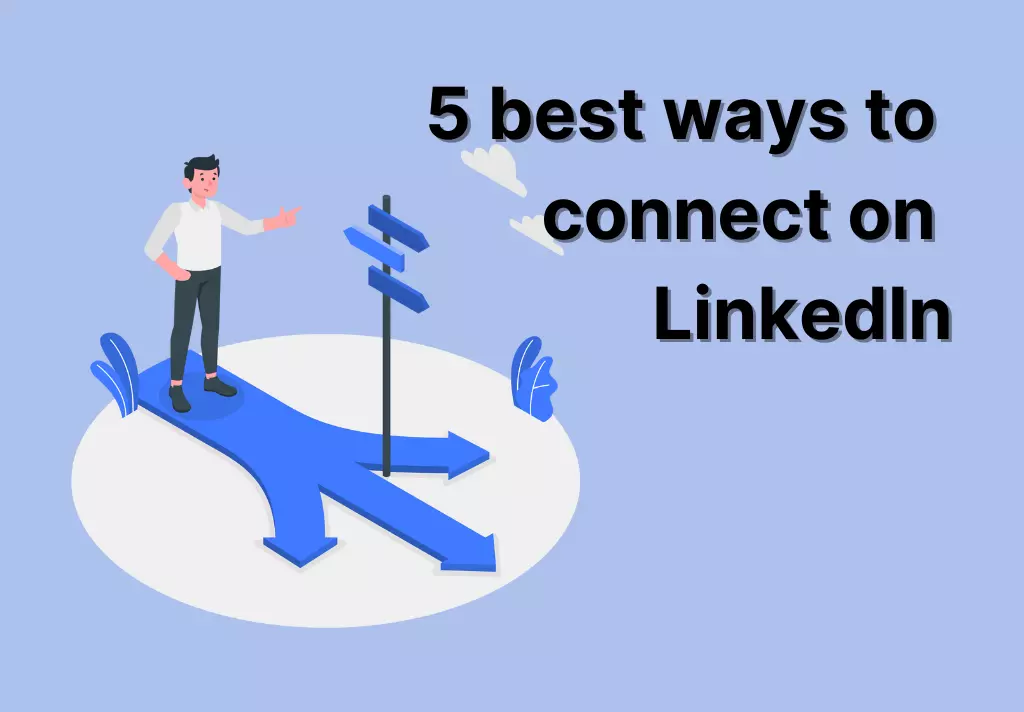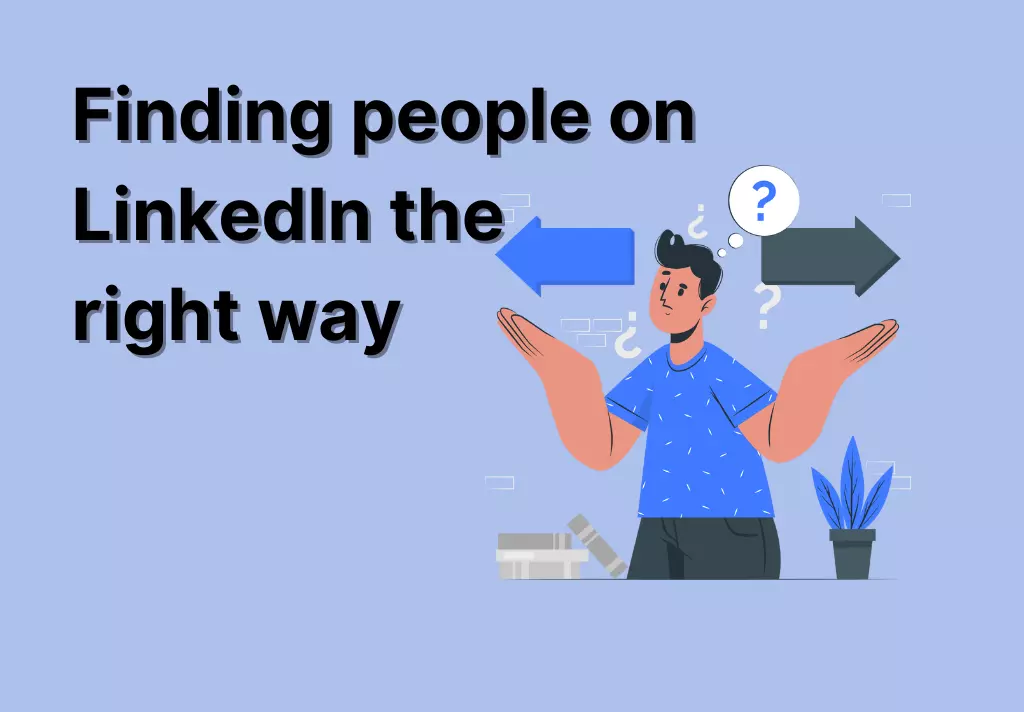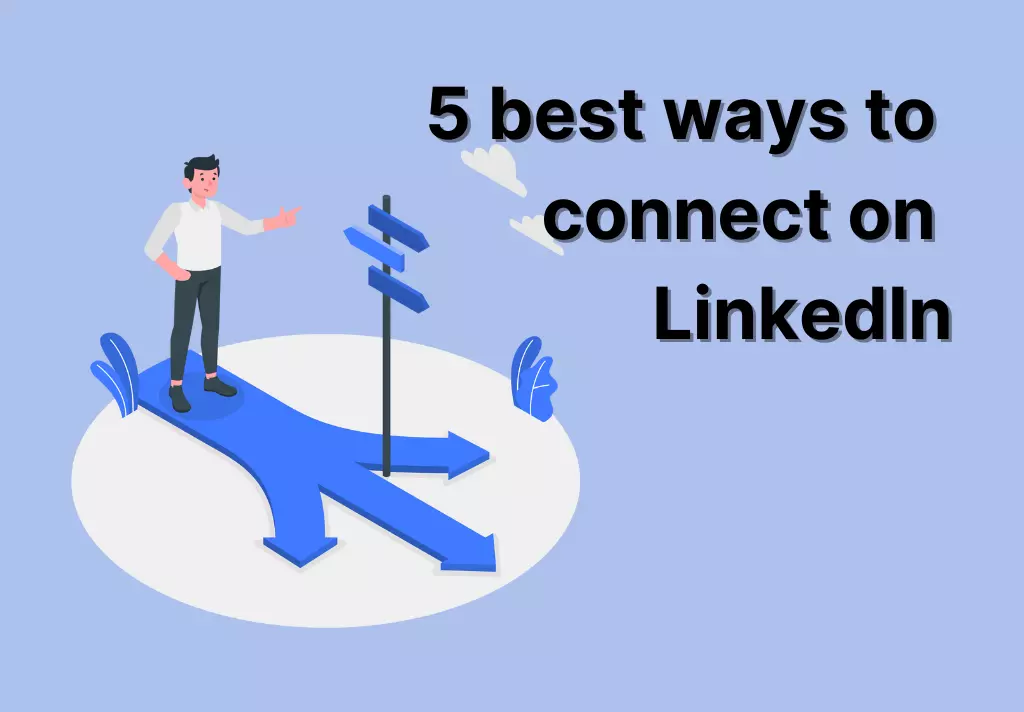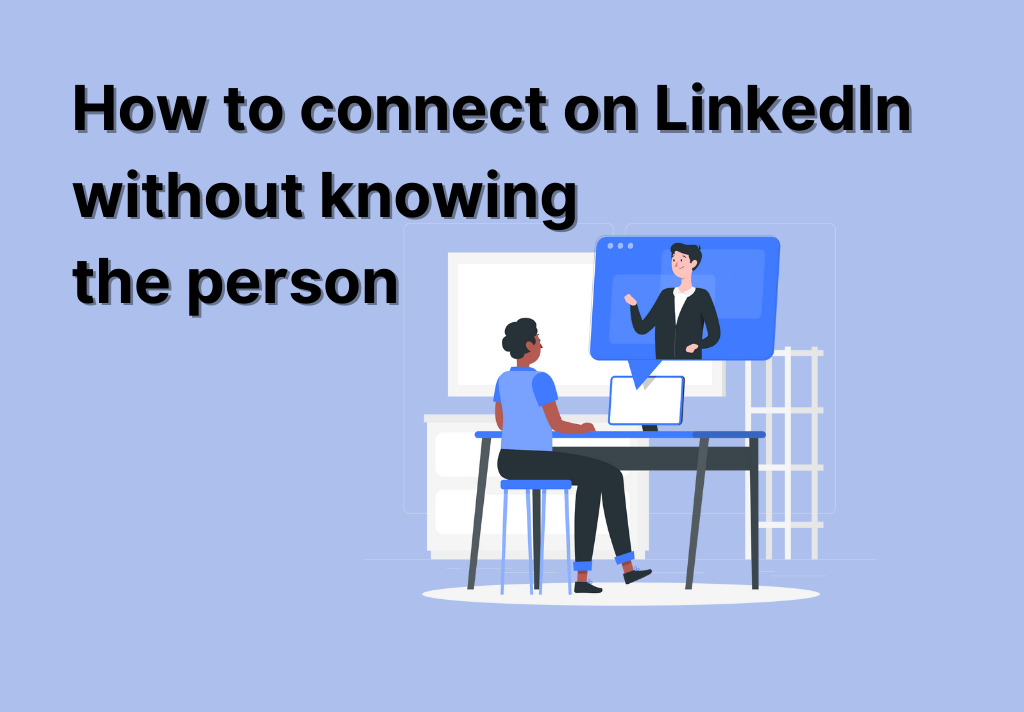Assume the receiver has never met you and may not remember you if they have. Don’t expect folks to go straight to your profile to learn more about you. Make things simple for them. Include any shared contacts or LI Groups, and let them know if you’ve worked for the same firm. So with these tips stated, lets check out how to connect on LinkedIn without knowing the person.
Move your cursor over your LinkedIn profile photo in the top right corner. Select Privacy and then ‘User viewing choices’ under ‘Privacy & Settings.’ You can choose ‘Anonymous LinkedIn member’ from this menu.
How to connect on LinkedIn without knowing the person
Assume the recipient has never met you and, if they have, may not remember you. Expect people to look at your profile first to learn more about you. Make things as simple as possible for them. Include any shared connections or LI Groups, and mention if you’ve worked for the same company.
Place your cursor over the upper right corner of your LinkedIn profile photo. Under ‘Privacy & Settings,’ select Privacy, then ‘User viewing choices.’ From this menu, select ‘Anonymous LinkedIn member.’
The problem to connect
The Connect button will not appear on a member’s profile if:
Your primary email hasn’t been confirmed, the email has bounced, or a new email requires confirmation.
You’re already linked to that individual. You’ve already made a connection request to the member. There is no miracle solution for engaging with strangers on LinkedIn but remember a few things.
When connecting with someone you’ve never met on LinkedIn, there are five things you should do. Following these measures will improve the appeal of your approach. It will also help you expand your zones of operation!
Also, read our blog How to find alumni on LinkedIn (Boost your career 2022)
1. You’ll need to personalize your invitation.
In a sea of darkness, stand out. Use a message that says more than “I’d like to connect with you on LinkedIn,” as this will not captivate the reader. Why should people consider accepting your invitation if you won’t take the time to think about it?
2. You must identify yourself to them.
Let them know if you have anything in common. Were you introduced to them via a common acquaintance? Are you both members of the same LinkedIn group? Or do you both work in the same field? Then make sure to mention it.
3. You must explain why you are contacting us.
What are you hoping to achieve by connecting with this person? Do they work in the industry you want to work in? Are they former classmates? Are you seeking for someone to mentor you? Tell them what drew you to send the invitation in the first place. If you’re merely connecting for the sake of connecting, you’re not using LinkedIn correctly.
4. It would be best if you broadened your value offer.
What advantages does this individual stand to gain by being related to you? Are you able to connect them with persons in your network that would be beneficial to them? Do you have any employment openings at your firm for which you might qualify? It’s a good idea to add any information that might affect someone’s decision to accept your invitation.
5. You must keep it brief.
Let’s get right to it! You have only 300 characters to express yourself. So jump right in, use everything you’ve learned so far, and you’ll be well on your way to making real connections.
6. Send a Personal Note with Connection Requests to a Potential Connection
When sending LinkedIn connection requests, don’t forget to include an answer to one of the site’s most crucial questions: WIIFM or “What’s in it for me?” Before you send a request, you should ask questions like these to ensure that you can send requests that give a reasonable justification for them to accept your request.
Using messages to communicate with individuals allows you to create relationships while also letting them know why you would be a great resource or connection for them. This might be as easy as indicating your continuous interest in the types of content they enjoy or as sophisticated as documenting your work experience and your ability to build in-person connections.
7. Join the LinkedIn Group with the Same Name
Joining one of their LinkedIn Groups is a quick way to contact someone on LinkedIn without sending a connection request. Naturally, this only works if your desired contact has the default settings enabled, which allow group members to send messages to one another.
When you identify a similar group member in an advanced people searches result, the option to send a message to them is currently unavailable; instead, you will be prompted to send an InMail. No problem: go to the same group you’re a member of, do a member search, and you’ll be able to send a message right from the user experience.
8. Remember Your Etiquette
You should continue to nurture warm leads in the “real” world, just as you should do so online. Remember that there is a real person behind every online avatar. When communicating with someone online, you should personalize your message and give them a reason to engage with you.
Always remember that online etiquette is the same as offline etiquette, and LinkedIn (along with all other social media sites like Twitter) is merely an example of “new tools, same rules.”
5 best ways to connect on LinkedIn

1. Make your LinkedIn connection
It’s critical to know how to connect with someone on LinkedIn in a way that makes them feel comfortable. Don’t just click the “connect” button and send a generic request when going through LinkedIn’s list of “people you may know.”
Instead, go to the person’s profile page and click the “connect” button there. That will open the box below, where you can add a personal note to your connection request, such as “It was great to meet you last week in Chicago.” Let’s stay in contact.”
2. Requests are more personal
Building your network might very well (and does) still happen the old-fashioned way when you meet and interact with people face to face, believe it or not. In fact, as we return to a world where we transact at least some business in person, opportunities to engage with people are resurfacing. Make the most of your opportunities.
Maybe you meet someone at a conference or a trade show? Have you ever volunteered for a charity event or served on a committee for one? Consider the proprietor of your favorite coffee shop, your healthcare provider, your yoga instructor, your classmates, and so on. It’s easy to overlook the people you interact with daily, so reach out. You could be shocked at what you find out about them on LinkedIn.
3. Follow up on networking chances that you have in person
It may appear impossible to go from 100 to 500+ relationships. When you divide that number by several weeks or months, it doesn’t seem so daunting. Instead of establishing a goal of moving from 100 to 500+ connections in two weeks, try setting a goal of 175 connections in two weeks and repeating the process.
Remember that the most critical aspect of goal-setting is to make them realistic and time-bound.
Also, keep in mind that how to develop LinkedIn relationships should be approached with caution. Whatever your objectives, it’s critical to follow good etiquette and avoid spamming people you don’t know. Quality trumps quantity, and spamming relationships aren’t going to help you either.
Expect only a small percentage of your connection requests to accept your invitations. They might have their own LinkedIn philosophy for evaluating the quality of possible connections and selecting whether or not to accept requests.
4. Break down your growth goals into manageable bits
LinkedIn Groups are topic-specific forums where you can interact with others in your business or specialization to establish relationships, share knowledge, and seek assistance. You can create groups representing communities within your target consumers to display your expertise while also learning more about prospects and customers.
5. Look into LinkedIn Groups
LinkedIn Groups are topic-specific forums where you can interact with others in your business or specialization to establish relationships, share knowledge, and seek assistance.
You can create groups representing communities within your target consumers to display your expertise while also learning more about prospects and customers.
Finding people on LinkedIn the right way

To expand your professional network and knowledge, use the LinkedIn Search box for hunting for people with similar interests, role models, and Influencers.
On your desktop, use the following steps to find a specific person on LinkedIn:
- Fill in the Search box at the top of the page with your search.
- Choose a member from the list of suggestions in the dropdown menu, or click At the bottom of the search, you’ll find all of the results.
- The type-ahead tool suggests relevant search terms as you type your keywords into the search bar.
- If you press Enter on your keyboard without typing a keyword, you’ll be sent straight to the search results page.
You can either message them or view their profile from the search results page. If the member you’re searching for is your connection, their profile(s) is displayed at the top of the page.
From any search results page, click the People tab at the top to only see people’s results for your search. To see more participants with the same first or last name, go to the Person area and click on See all people results. You can further sort and filter your results by clicking the dropdown next to each category.
How to ask someone to connect on LinkedIn

- Go to the member’s profile that you’d like to connect with.
- In the introduction section, click the Connect button.
- Add a note by clicking Add a note.
- Fill up the text field with your unique message.
- Send the invitation by clicking the Send button.
How to build connections fast on LinkedIn
- Using LinkedIn’s Advanced Search, find your target audience by job title.
- Connect with people you know, coworkers, and others by sharing your profile.
- Invite the people you already know to connect with you.
- Enhance your online presence.
- Make use of the “People You Might Know” option.
Conclusion
There is no miracle solution for engaging with strangers on LinkedIn but remember a few things. Assume the receiver has never met you and may not remember you if they have. Don’t expect folks to go straight to your profile to learn more about you. Include any shared contacts or LI Groups, and let them know if you’ve worked for the same firm.
If you want to connect with someone on LinkedIn, you need to take the time to think about why you sent them an invitation in the first place.
Using messages to communicate with individuals allows you to create relationships while also letting them know why you would be a great resource or connection for them. Remember that online etiquette is the same as offline etiquette, and LinkedIn is an example of “new tools, same rules”.
Keep the interaction ongoing

Hi, i’m Akash shaw creator of Adsvast agency , Hello, I am a perfectionist with deep love for aesthetics,
a graphics designer with expertise in logo design and branding.
My only goal with Notamartwork is try to help others to freelancers to get jobs and learn how to do freelancing.
